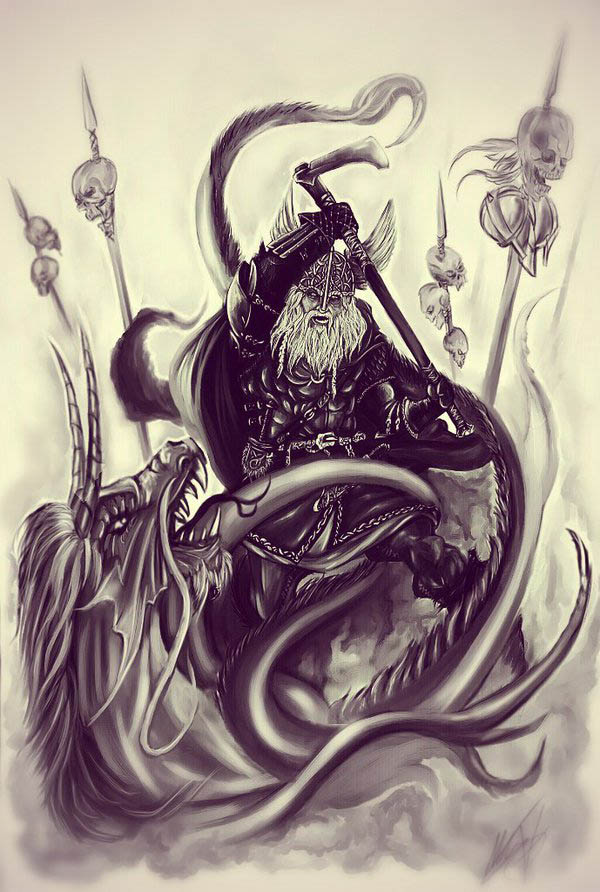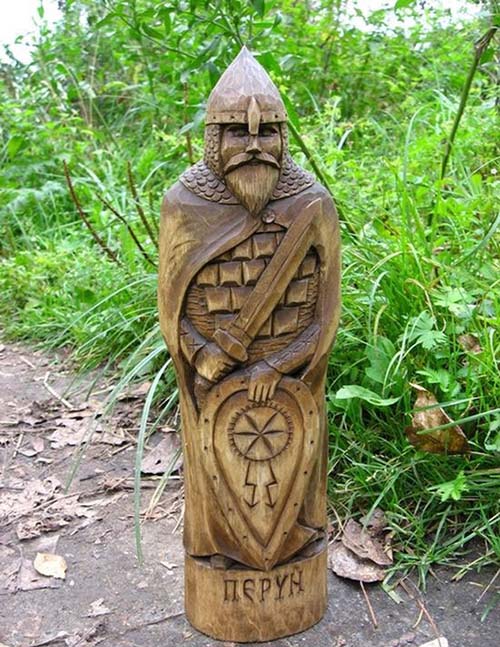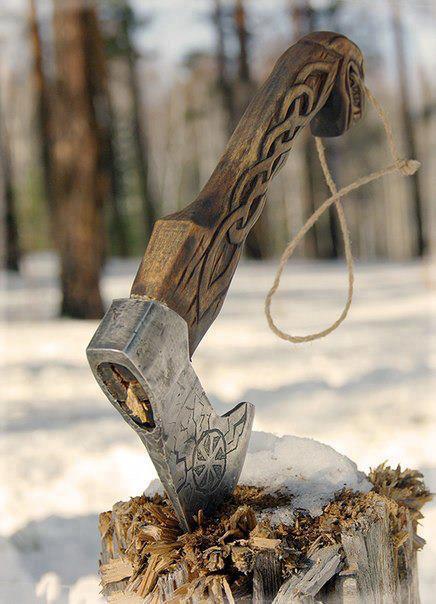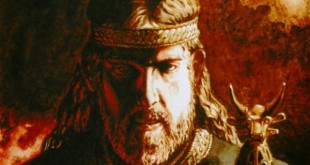One of the main slavic deity, often acting as a head of other gods (like Zeus or Odin, unfortunately, slavic gods aren’t as well known). His partner, Perperuna is usually identified with the forces of fertility. The name Perun should, obviously, associate you with something, namely with lightning (lightning in polish: piorun), because the god Perun is, among others, a lord of lightning. Paradoxically, his name is chronologically primordial, while the name of an atmospheric phenomenon is secondary – to put it differently, first, there was a deity called Perun, and then, after his name, the atmospheric phenomenon took it’s name.
In case of Perun, there’s a rich set of folkloristic materials, oral traditions, little bit of written ones. Researchers are finding them on the whole slavic area, also among baltic folk. However, this undoubted trump can present some trouble. Alexander Bruckner proves, that Perun (at least, under this name) is only known on Rus. Alexander Gieysztor completely disagrees with putting the case this way, proving, that you can also find deities associated to Perun in other slavic-speaking areas (for example, Perkun, present in Balts beliefs, this is the easiest and the most obvious example). The basis “per” (realtively “perk”) means, simply, “hit”, so perun (perkun and it’s derivatives) is just a “person, who hits” – the lightning is also hitting, hence there’s an analogy to the atmospheric phenomenon. Let’s leave deeper word-formative inquiries to the linguists and if you’re insatiate in that issue, I send you to the researchers, whom I mentioned above.
Perun, as I said, is a god of lightning, to put it wider, a god of the sky and atmosphere as such. (His dualistic opposite is Weles, lord of underground and afterlife). He combines in himself functions of a deity, who holds the authority over law and a military deity, associated with force – in different historical periods, often one of the functions prevails the other. (e.g after the X century, Perun was especially identified with army, warriors were relying on him). In mythology, Perun was often presented when he’s struggling with Wij (a snake, dragon, relatively with other maritime monster) as a metaphore of battle of good versus evil, analogical to other mythologies (Zeus-Tyfon, Marduk-Tiamat). His similarity with nordic Thor also may not be accidental – there are suspicions saying, that at some degree, there was an “exchange” of beliefs, between slavic and nordic folks. (although it’s hard to establish from who to who). The personification of Perun in nature is oak (lat:querkus) and animals such as ox, ram or pigeon. Places, where lightning hit (especially trees and rocks) are considered as sacred. Also the leavings after such event are getting special properties. (they become apotrpeions) – fragments of boulders, sharply ended and similar to arrowheads, are very a valuable find and can help in some situations, e.g when a cow doesn’t want to give milk, you should rub her udders using such piece. This way, Perun is also connected with weapons, such as arc and arrows. One of the attributes of this deity is an axe, which has some magical properties and can be used for protecting purposes against deseases and impure forces. The axe is put under the bed of a woman, who’s giving a birth or e.g on the field at sowing, so it protects it from the hail. There’s also a custom of hitting yourself in the head with a stone (relatively with iron) right after you hear the first spring thunder.

There are some rituals associated with Perun. But first I’ll describe shortly the one, that concerns indirectly Perun, because it’s related to his partner, Perperuna. In the southern slavic countries, during the drought, there’s a custom, when the dancing children are choosing young, immature and unready to marriage girl ( an extra advantage is a situation, when the girl is the last child before her mother looses her fertility) this unfortunate girl, naked, wearing only flowers, herbs and leaves, going through the village is sprinkled with water by old women and housewives. This girl is known in several countries under few names, such as Perepuna, Peperuna (Bulgaria and Macedonia), Perperuna (Greece), Perperona (Albania), Pirpiruna (Romania). Whereas in Russian mythology appears an enigmatic deity Perepłuta, which may also have connections with described girl.
I didn’t mention about this rite, designed to stop the drought and restoring the rain, for no reason. Perun, as I mentioned before, is opposite to the Zmey (Żmij) figure (pl.żmija-viper), closely connected with water. In Serbia and Bulgaria there’s a rite, celebrated on April 14th (St.Jeremias’ day) when youth is casting out all the vipers in order to obtain the rain – they cast them out by using special bells and specified songs, or killing the reptile by a tool or a cult fire. On the Serbian area, there’s a rite, during which girls are decorating the main oak in the village, asking it for fertility of fields , one of the hosts is sacrificing a lamb (a bull in Macedonia), a sacrificial blood is gathered to the hole under the oak, specified parts of an animal (ears, legs) are buried, after that, they have a feast and eat, among other things, a victims meat or a ritual bread (as an amorphous pastry, transformed in a magical furnace, has very strong magical properties), which is shared among community.
When it comes to magical purposes, fauna and flora are also identified with Peruns magical force (a bull, pigeon, ram, turkey, oak, acorns). On Samogitia, in order to obtain the rain, they hang a sheep’s skin. To obtain good yields, they plow the fields during the night from the east to the west using black oxes, and in the end, they bury a black cock (or two – as a personification of two brothers). Whereas pigeons underlie to the special tabu, they belong to the magic of love and that’s why they cannot be eaten.
Przeczytaj oryginalny polski artykuł o bogu Perun.
 Słowiański Bestiariusz Kompendium wierzeń, demonologii, symboli i bóstw słowiańskich. Poruszamy również tematy dotyczące medycyny ludowej i życia codziennego Słowian.
Słowiański Bestiariusz Kompendium wierzeń, demonologii, symboli i bóstw słowiańskich. Poruszamy również tematy dotyczące medycyny ludowej i życia codziennego Słowian.



